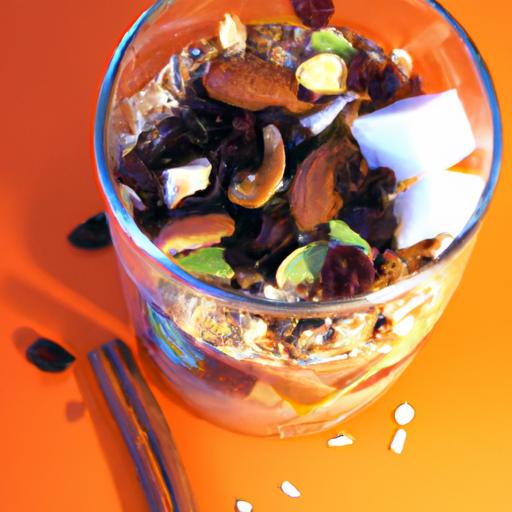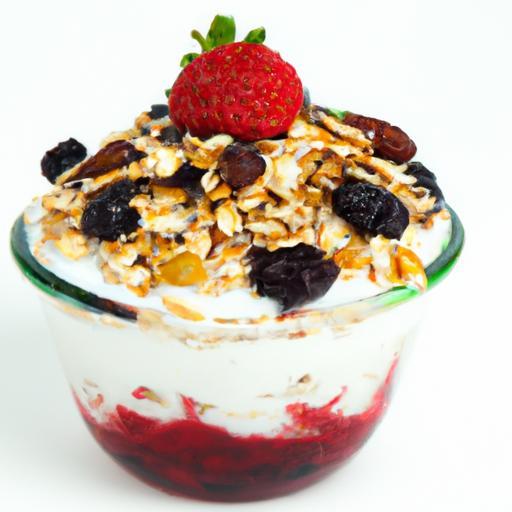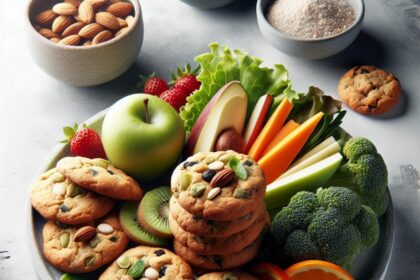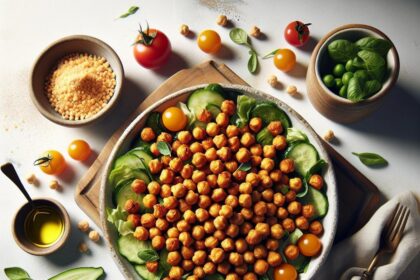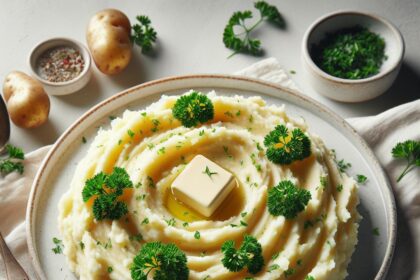There’s something magical about overnight oats: a simple jar, a handful of ingredients, and hours of quiet chilling that promise a creamy, effortless breakfast. But what happens when that promise falls flat and instead of smooth and luscious, your oats come out gummy, dense, or even a little gluey? Suddenly, your wholesome morning treat turns into a perplexing puzzle. Why are your overnight oats gummy? In this article, we’ll unravel the mystery behind this frustrating texture, exploring the science of oats, the influence of soaking times, liquid ratios, and ingredient choices. Prepare to transform your sleepy jar of oats into the perfect, dreamy breakfast bowl you’ve been craving.
Understanding the Science Behind Overnight Oats Texture
Why Are My Overnight Oats Gummy? This common question comes from many enthusiasts who cherish this wholesome breakfast but struggle with an unexpected chewy, sticky texture. The secret to perfect overnight oats lies in the delicate balance of oats, liquid, and soaking time. When soaked, the oats absorb the liquid and swell, activating their natural starches, which can create a gummy consistency if the ratios or ingredients aren’t thoughtfully adjusted.
Old-fashioned rolled oats are preferred for a tender bite, whereas instant oats break down quicker, often leading to mushiness. The viscosity of your chosen liquid-be it milk, yogurt, or plant-based alternatives-also influences texture. Sugars and dairy proteins interact with oats, sometimes thickening the mixture excessively, so knowing how each factor contributes helps you customize your perfect batch.
Common Ingredients That Contribute to Gummy Oats and How to Adjust Them
Overnight oats gummy texture is typically caused by:
- Oat type: Instant or quick oats absorb moisture rapidly and break down more, leading to a gluey feel.
- Liquid ratio: Too little liquid causes oats to clump and thicken excessively.
- Excess sweeteners or thickeners: Ingredients like honey, maple syrup, chia seeds, or yogurt increase viscosity.
- Prolonged soaking: Leaving oats for over 12 hours tends to breakdown the oat’s cell structure.
Adjust by using rolled oats for a chewier texture, increasing liquid slightly, and balancing sweeteners. A splash of water or milk before serving can loosen overly thick oats.
Step by Step Tips to Achieve Fluffy Overnight Oats Every Time
- Choose your oats wisely: Select organic rolled oats for a perfect bite and ideal absorption.
- Measure with precision: Use a 1:1.5 ratio of oats to liquid (e.g., 1 cup oats to 1.5 cups liquid) for fluffiness.
- Mix thoroughly: Combine oats and liquid with a gentle stir, ensuring even soaking without overcrowding.
- Incorporate yogurt or milk at serving: Add dairy or plant-based yogurt just before eating for creaminess without excess thickening.
- Limit soaking time: Stick to 6-8 hours in the fridge to prevent breakdown of oat structure.
- Fluff before eating: Stir your oats with a fork to separate and lighten the texture.
Creative Mix-Ins and Preparation Hacks to Avoid Gummy Results
- Fresh fruits: Add diced apples, berries, or citrus zest in the morning for freshness and textural contrast.
- Crunchy toppings: Toasted nuts, seeds, or granola added just before serving bring dynamic crunch.
- Use chia seeds sparingly: These expand during soaking-add no more than 1 tablespoon to prevent excess thickening.
- Try dairy alternatives: Coconut or almond milk water down viscosity, making oats lighter.
- Separate soaking liquids: Pre-soak chia seeds or acidic fruit chunks separately to control release of thickening agents.
- Use a blender: Blend oats and liquid lightly before soaking to create a smooth, uniform texture without stickiness.
Prep and Cook Time
Prep Time: 5 minutes
Soaking Time: 6 to 8 hours (overnight)
Yield
Serves 2-3 breakfast portions
Difficulty Level
Easy
Ingredients
- 1 cup organic rolled oats
- 1 ½ cups unsweetened almond milk (or preferred milk)
- 2 tbsp plain Greek yogurt (optional, added before serving)
- 1 tbsp chia seeds (optional, use sparingly)
- 1 tbsp pure maple syrup or honey
- ½ tsp vanilla extract
- Pinch of sea salt
- Fresh fruit for topping (berries, apple slices, or citrus zest)
- Crunchy nuts or granola for garnish
Instructions
- Combine oats and liquid: In a medium jar or bowl, add 1 cup rolled oats and 1 ½ cups almond milk. Stir gently to coat evenly.
- Add chia seeds and sweetener: Mix in 1 tbsp chia seeds and 1 tbsp maple syrup along with ½ tsp vanilla extract and a pinch of salt. Stir thoroughly.
- Cover and refrigerate: Seal the container and refrigerate for 6 to 8 hours or overnight. Avoid soaking longer to maintain fluffiness.
- Prepare toppings: Chop fresh fruit and prepare crunchy garnishes while oats soak.
- Before serving: Remove oats from fridge, stir gently with a fork to fluff. Stir in 2 tbsp Greek yogurt for creaminess if desired.
- Garnish and serve: Top with fresh fruit, nuts, or granola just before serving for texture contrast and vibrant color.
Chef’s Notes
- For a lighter texture, add an extra ¼ cup liquid but adjust sweeteners accordingly to avoid diluting flavors.
- Instant oats soak too quickly and often result in gummy oats-reserve them for quick breakfast parfaits instead.
- Add acidic fruits like pineapple or citrus just before serving to avoid breakdown of oat structure during soaking.
- Overnight oats can be made in bulk and stored in airtight jars for up to 3 days, but texture may firm up-add a splash of milk when serving.
- Experiment with spices like cinnamon or cardamom for an aromatic twist that pairs beautifully with creamy oats.
Serving Suggestions
Serve your perfectly fluffy overnight oats in a clear glass jar to showcase layers of oats and colorful toppings. Garnish with a sprig of fresh mint or edible flowers for visual appeal. Pair with a warm cup of herbal tea or fresh-pressed juice to round out a refreshing, nutrient-packed morning meal. For a heartier option, add a dollop of nut butter or a spoonful of coconut cream on top.
| Nutrient | Per Serving (1 cup) |
|---|---|
| Calories | 220 |
| Protein | 6g |
| Carbohydrates | 32g |
| Fat | 5g |

For more tips on optimizing breakfast textures, check out our Ultimate Guide to Oats. Learn more on oat nutrition at Encyclopaedia Britannica.
Q&A
Q: Why do my overnight oats turn out gummy instead of creamy?
A: Great question! The gummy texture often comes from the oats absorbing too much liquid and the starches swelling excessively overnight. Basically, the oats soak up moisture, and their natural starches gelatinize, creating that gummy feeling instead of a smooth, creamy bite.
Q: Does the type of oats I use affect the texture?
A: Absolutely! Rolled oats tend to give you a creamier, softer result because they absorb liquid evenly. Steel-cut oats, on the other hand, are heartier and can stay chewy or sometimes gummy if left too long. Quick oats might get mushy but less gummy. So choosing your oat type is one key piece of the texture puzzle.
Q: How much liquid should I add to avoid gummy oats?
A: A good rule of thumb is to use about a 1:1 ratio of oats to liquid by volume, but adjustments matter! If you notice gummy oats, try adding a bit more liquid or reducing soaking time. Too little liquid means the oats soak up and thicken into a gummy mass, so balancing is essential.
Q: Can soaking time cause gummy overnight oats?
A: Yes! Leaving oats to soak for too long, especially beyond 12 hours, can cause starches to break down overly, making them gummy. Sometimes shorter soaking (6-8 hours) or even a quick soak with hot liquid can help keep the texture creamy and pleasant.
Q: Does temperature affect the oat texture?
A: Definitely. Refrigeration slows down the starch gelatinization process, but if oats sit in the fridge too long, the starches can still fully swell, causing gummy oats. Room temperature soaking might speed absorption but risks fermentation or spoilage. So chilling overnight but not for days is best.
Q: Will adding yogurt or milk change the texture of overnight oats?
A: Yes, the type of liquid you choose influences texture. Dairy milk or almond milk tends to produce creamier oats, while thicker bases like yogurt can make the mix denser or tackier, sometimes contributing to a gummy feel. Experiment with ratios and bases for your desired consistency!
Q: Are there any quick fixes if my oats already turned gummy?
A: You can try stirring in a splash of milk or water and letting it sit for a few minutes to loosen the texture. Adding fresh fruit or nuts can also add bite and balance the chewiness. For next time, tweaking soak time, oat type, or liquid ratio will help you avoid gummy results altogether.
Q: Is gummy overnight oats always a bad thing?
A: Not necessarily! Some people enjoy a thicker, almost pudding-like texture, which comes from the gummy starches. If that’s your vibe, embrace the gumminess. But if you prefer silky smooth oats, adjusting your method helps you unlock that perfect creamy breakfast magic.
In Retrospect
In the quest for the perfect jar of overnight oats, encountering a gummy texture can feel like a culinary curveball. But armed with newfound understanding-whether it’s the type of oats, soaking time, liquid ratio, or stirring technique-you’re now ready to tweak your recipe and reclaim that creamy, dreamy breakfast you crave. Remember, science and patience are your best allies in this oats adventure. So go ahead, experiment with confidence, and soon your mornings will be filled with jars of overnight oats that delight your taste buds and fuel your day just right. Gummy no more!